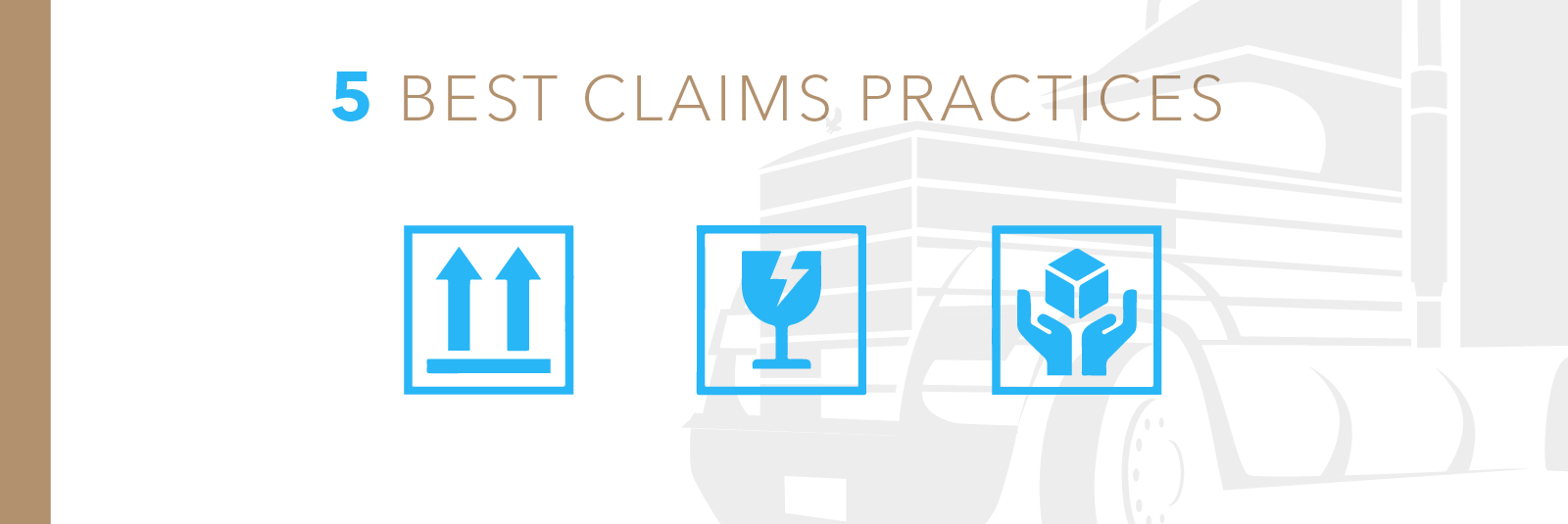Ideally, shipments would always arrive at their final destination perfectly intact– but that’s not always the case. When an unexpected accident occurs and your shipment becomes lost or damaged, you need to file a claim. Here are five things you can do in the event of a claim to ensure you lose as little revenue as possible, keep your customers happy, and minimize the disruption of your everyday operations.
- Record All Damage
The first, and most essential, step in filing a claim is making sure to document everything. Take pictures of any affected packages and write down on the delivery receipt any notable damage you can find (i.e. torn or pilfered containers). Use clear language and be as specific as possible when noting any damage (for example: “Upper left corner of cardboard box has a three-inch tear”). If you fail to create a record of damage and accept the package as is, by signing for its delivery, then the claim will be tough to resolve.
- Keep Everything
Although elements of the shipment may be damaged, it’s imperative that you don’t throw anything away. This is essential to your claim, as the carrier typically retains the right to receive any damaged goods and your claim may be deemed invalid if you’re unable to produce the shipment in question. Retain the damaged freight until your claim has been resolved in its entirety. You’ll want to hold on to the freight yourself because otherwise you’ll be charged storage fees by the carrier.
- Ask for a Carrier’s Inspection
At no cost to you, you can request that your carrier inspects the damaged goods. Your carrier has the ability to waive their right to inspection, and many will if they do not see the claim as having a high amount of monetary value. However, it’s in your best interest to request a carrier inspection so that as the claim is being investigated the carrier is aware of exactly how much damage occurred, and they have a written account of said damage.
- Provide All Necessary Documentation
You already know to provide as much documentation as possible when filing a claim. However, there are additional pieces of paperwork you might not have thought of as being necessary. In addition to providing any photographic or written evidence of the accident, you’ll also want to include these things to make your claim as robust as possible:
- Freight claim form
- Itemized list of shipment goods (bill of lading)
- Bill from the carrier freight
- Any related invoices
- Receipt of delivery
- Invoice from any applicable repairs caused by the damage
- Report of inspection from the carrier
- Remember to Pay the Freight Bill
Just because your shipment has been damaged doesn’t mean you’re off the hook for paying your freight bill. In fact, your claim won’t be processed as long as your bill remains unpaid. The claim and freight bill are two independent items that need addressing, and just because you’ve filed a claim it doesn’t absolve you from settling any remaining freight charges.
While there’s never going to be a risk-free shipment, you can do everything in your power to make sure your claim is resolved quickly and effectively when an accident does occur. By implementing these simple tips into your claim process, you’re making sure you can spend less time dealing with liabilities and get back to business.
